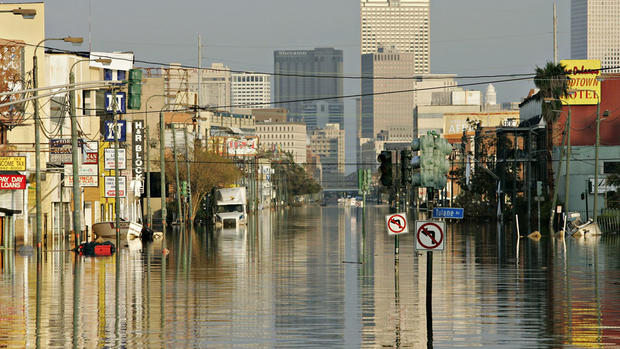How insurance policies have changed in the post-Katrina years
Even though U.S. forecasters are predicting this year's Atlantic Hurricane Season will have below-normal activity, we're heading into September, the season's peak time. And a recent spate of hurricanes and tropical storms are reminders that threats to life and property along coastal areas can appear rapidly during this time of year.
On Thursday, while marking the 10th anniversary of Hurricane Katrina, President Obama noted the devastating storm and the slow official response to the disaster was "an example of what happens when government fails."
The insurance industry, meanwhile, has also learned lessons from Hurricane Katrina, and is applying them to improving its overall response to such disasters.
Insurance industry analysts say Katrina was the biggest single insured loss event in history. It caused more than $41 billion in insured property damage, with total economic damage topping $100 billion.
A report issued this month by the Marsh insurance brokerage and risk management group outlines how the outcomes of Katrina, as well as Hurricane Ike and Superstorm Sandy, all brought about the major changes in property insurance, claims, analytics and crisis management over the past decade.
Because of its size and devastation, the report says Hurricane Katrina "exposed ambiguities in insurance policies, many of which led to claim disputes and litigation." It also notes that, while computer catastrophe modeling (CAT) was being used ten years ago, its results were "greatly out of line" compared to actual losses.
Those inaccuracies have prompted the insurance industry to revamp its CAT modeling, which has helped to reduce loss estimates due to data inaccuracies and better inform insurance underwriters.
Insurers have also tightened the wording of their property policies, especially when it comes to factors such as business interruption. After Superstorm Sandy, for example, the report notes that some commercial policy owners discovered their policies excluded flood damage "if a service supplier was affected by that peril."
But as a result, many insurance companies are now working closer with commercial policyholders when it comes to working out potential catastrophic loss management and funding related claims.
The flooding and damage to thousands of businesses caused by Katrina, according to the Property Casualty 360 website, has also brought a renewed focus to the issue of property risk engineering, which looks at the design and location of structures.
But one of the biggest changes over the past decade has been in government and private industry crisis management planning. A 2011 Federal Emergency Management Agency (FEMA) report says two-thirds of U.S. businesses had reviewed and updated their disaster recovery procedures after Hurricane Katrina.
Technological improvements have also helped both insurers and policyholders, especially when it comes to filing claims following a disaster.
"Claims technology has fundamentally improved in the 10 years since Katrina," Bill Schulenberg with Apple Adjusters, Inc. in Baton Rouge tells Property Casualty 360.
"Thus, many of the problems we faced are no longer issues. For example, cloud technology did not exist at the time. The lesson, however, is that one should stay current with today's technology and not be afraid to use it to improve your work product."


